Microbiota promotes systemic T-cell survival through suppression of an apoptotic factor
- PMID: 28487480
- PMCID: PMC5448176
- DOI: 10.1073/pnas.1619336114
Microbiota promotes systemic T-cell survival through suppression of an apoptotic factor
Abstract
Symbiotic microbes impact the severity of a variety of diseases through regulation of T-cell development. However, little is known regarding the molecular mechanisms by which this is accomplished. Here we report that a secreted factor, Erdr1, is regulated by the microbiota to control T-cell apoptosis. Erdr1 expression was identified by transcriptome analysis to be elevated in splenic T cells from germfree and antibiotic-treated mice. Suppression of Erdr1 depends on detection of circulating microbial products by Toll-like receptors on T cells, and this regulation is conserved in human T cells. Erdr1 was found to function as an autocrine factor to induce apoptosis through caspase 3. Consistent with elevated levels of Erdr1, germfree mice have increased splenic T-cell apoptosis. RNA sequencing of Erdr1-overexpressing cells identified the up-regulation of genes involved in Fas-mediated cell death, and Erdr1 fails to induce apoptosis in Fas-deficient cells. Importantly, forced changes in Erdr1 expression levels dictate the survival of auto-reactive T cells and the clinical outcome of neuro-inflammatory autoimmune disease. Cellular survival is a fundamental feature regulating appropriate immune responses. We have identified a mechanism whereby the host integrates signals from the microbiota to control T-cell apoptosis, making regulation of Erdr1 a potential therapeutic target for autoimmune disease.
Keywords: Fas; T cells; Toll-like receptors; apoptosis; microbiota.
Conflict of interest statement
The authors declare no conflict of interest.
Figures
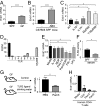

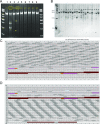


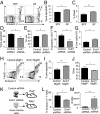

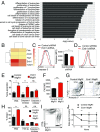
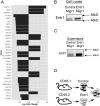
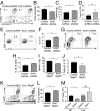

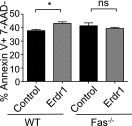
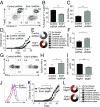

Similar articles
-
Commensal regulation of T cell survival through Erdr1.Gut Microbes. 2018;9(5):458-464. doi: 10.1080/19490976.2018.1441662. Epub 2018 Apr 11. Gut Microbes. 2018. PMID: 29543554 Free PMC article. Review.
-
Erdr1 Suppresses Murine Melanoma Growth via Regulation of Apoptosis.Int J Mol Sci. 2016 Jan 14;17(1):107. doi: 10.3390/ijms17010107. Int J Mol Sci. 2016. PMID: 26784177 Free PMC article.
-
Erythroid differentiation regulator 1, an interleukin 18-regulated gene, acts as a metastasis suppressor in melanoma.J Invest Dermatol. 2011 Oct;131(10):2096-104. doi: 10.1038/jid.2011.170. Epub 2011 Jun 23. J Invest Dermatol. 2011. PMID: 21697887
-
Erythroid differentiation regulator 1 strengthens TCR signaling in thymocytes by modulating calcium flux.Cell Immunol. 2019 Feb;336:28-33. doi: 10.1016/j.cellimm.2018.12.004. Epub 2018 Dec 5. Cell Immunol. 2019. PMID: 30551791
-
The Role of Erythroid Differentiation Regulator 1 (ERDR1) in the Control of Proliferation and Photodynamic Therapy (PDT) Response.Int J Mol Sci. 2020 Apr 9;21(7):2603. doi: 10.3390/ijms21072603. Int J Mol Sci. 2020. PMID: 32283647 Free PMC article. Review.
Cited by
-
The microbiota protects from viral-induced neurologic damage through microglia-intrinsic TLR signaling.Elife. 2019 Jul 16;8:e47117. doi: 10.7554/eLife.47117. Elife. 2019. PMID: 31309928 Free PMC article.
-
Disequilibrium in the Thioredoxin Reductase-1/Thioredoxin-1 Redox Couple Is Associated with Increased T-Cell Apoptosis in Children with Autism.Metabolites. 2023 Feb 16;13(2):286. doi: 10.3390/metabo13020286. Metabolites. 2023. PMID: 36837907 Free PMC article.
-
The roles of lncRNAs and miRNAs in pancreatic cancer: a focus on cancer development and progression and their roles as potential biomarkers.Front Oncol. 2024 Mar 15;14:1355064. doi: 10.3389/fonc.2024.1355064. eCollection 2024. Front Oncol. 2024. PMID: 38559560 Free PMC article. Review.
-
The microbiota and T cells non-genetically modulate inherited phenotypes transgenerationally.Cell Rep. 2024 Apr 23;43(4):114029. doi: 10.1016/j.celrep.2024.114029. Epub 2024 Apr 4. Cell Rep. 2024. PMID: 38573852 Free PMC article.
-
Exploring the cellular landscape of circular RNAs using full-length single-cell RNA sequencing.Nat Commun. 2022 Jun 10;13(1):3242. doi: 10.1038/s41467-022-30963-8. Nat Commun. 2022. PMID: 35688820 Free PMC article.
References
-
- Mazmanian SK, Liu CH, Tzianabos AO, Kasper DL. An immunomodulatory molecule of symbiotic bacteria directs maturation of the host immune system. Cell. 2005;122:107–118. - PubMed
Publication types
MeSH terms
Substances
Grants and funding
LinkOut - more resources
Full Text Sources
Other Literature Sources
Molecular Biology Databases
Research Materials
Miscellaneous

